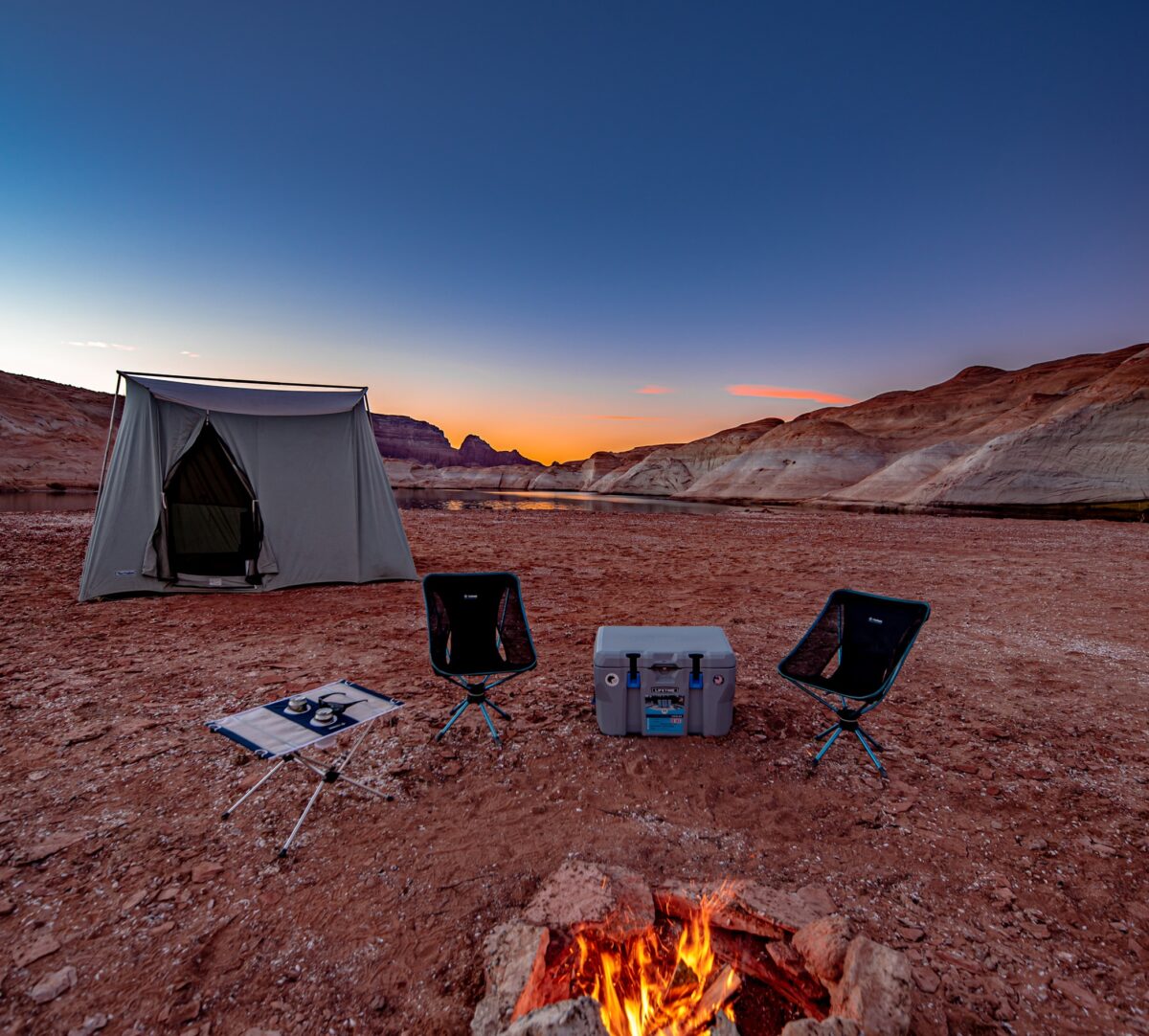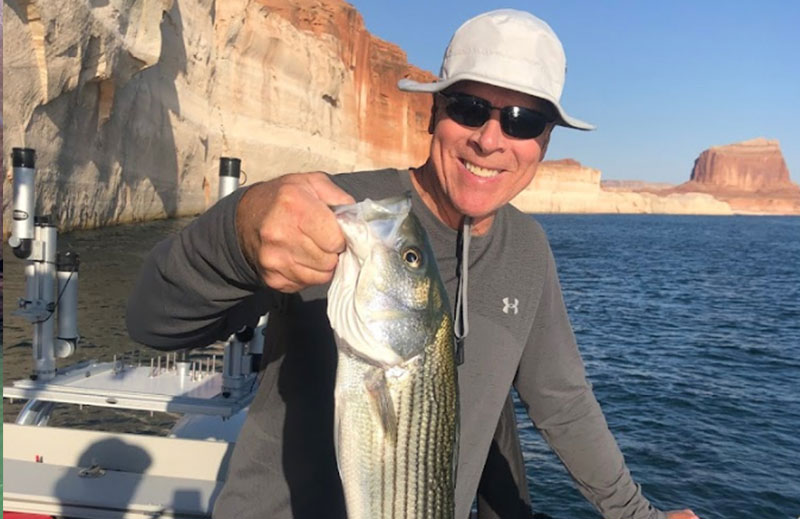There’s camping, and then there’s camping at Lake Powell. Add a knowledgeable guide to the mix, and you’ve got a next-level adventure that blends outdoor comfort, scenic beauty, and unforgettable experiences. Whether you’re new to the outdoors or just want a more relaxing trip without all the heavy lifting, guided camping at Lake Powell might be just what you’re looking for.
Let’s walk you through everything you can expect from a guided camping experience on Lake Powell—from the views and the gear to the food and the fun. We’ll also talk about how it compares to DIY camping, the benefits of going with a guide, and what makes Glen Canyon and Lake Powell one of the best places in the Southwest for an outdoor getaway.
What is Guided Camping at Lake Powell?
Guided camping at Lake Powell is a fully-supported camping experience where an expert guide handles the logistics so you can focus on enjoying the scenery and the adventure. That means no packing tents, no worrying about meals, and no guessing where to set up camp. You just show up, and we take care of the rest.
Our Lake Powell camping tours often include boat transportation to a remote beach, all the gear (tents, sleeping pads, cooking supplies), delicious campfire meals, and activities like fishing, hiking, or stargazing. It’s perfect for couples, families, or small groups who want to experience Lake Powell’s backcountry beauty with ease.
Why Camp in Glen Canyon?
Lake Powell sits in the heart of Glen Canyon National Recreation Area—a place packed with jaw-dropping views, deep canyons, and hidden beaches. Camping here is unlike anywhere else. You can wake up to red rock cliffs glowing in the sunrise, swim in clear water steps from your tent, and spend your day exploring slot canyons or casting a line.
Camping Glen Canyon-style means getting away from the crowds and immersing yourself in the raw beauty of the Southwest. It’s quiet, remote, and soul-filling.
What to Expect on a Lake Powell Camping Tour
When you book a guided camping trip with Lake Powell Guide Services, here’s what a typical experience includes:
- Boat Access to Remote Beaches: We take you by boat to secluded camping spots only accessible from the water. That means privacy, space, and some of the most scenic campsites around.
- All-Inclusive Gear: Tents, chairs, shade, sleeping bags, sleeping pads—we bring everything you need. You don’t have to buy or pack a thing.
- Campfire Cooking: Enjoy hot, freshly-prepared meals cooked right at camp. We handle the menu, prep, and cleanup.
- Activities: Want to fish? Hike a slot canyon? Paddle around in a kayak or just relax under the stars? We can build your trip around what you enjoy.
- Expert Local Guide: Our guides know the lake inside and out. They handle safety, navigation, weather, and planning—plus, they’re full of stories and local knowledge that make your trip richer.
Who is Guided Camping Good For?
Just about anyone. Whether you’re brand new to camping or just want to enjoy the outdoors without all the hassle, guided camping is a great option. It’s especially perfect for:
- Families who want a safe, structured adventure
- Couples looking for a romantic, unplugged getaway
- Groups of friends who want to focus on fun, not planning
- Solo travelers who want expert support
What Should You Bring?
Since we provide most of the gear, your packing list is short. Here’s what we recommend:
- Personal clothing (layers, swimwear, hat, sun protection)
- Toiletries and personal medications
- Camera or phone for photos
- Reusable water bottle
- Any special snacks or drinks you want
We handle the rest.
Why Choose Lake Powell Guide Services?
We live and breathe Lake Powell. Our team is local, experienced, and passionate about helping people discover the beauty of Glen Canyon in a safe, memorable way. We know the best camping spots, the best times to go, and how to make every detail of your trip comfortable and fun.
Plus, when you camp with us, you’re not just getting a guide—you’re getting an experience that feels both adventurous and easy.
Book Your Lake Powell Camping Adventure
Ready to unplug and recharge with a guided camping trip? Whether it’s your first time visiting Lake Powell or your tenth, we’ll help you create a custom outdoor adventure that you’ll never forget.
Book your Lake Powell camping tour today and experience Glen Canyon like never before.



